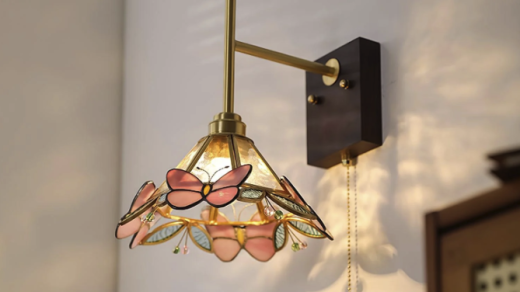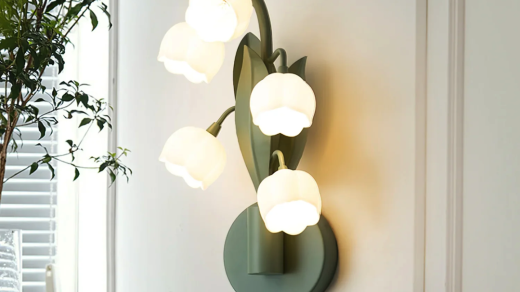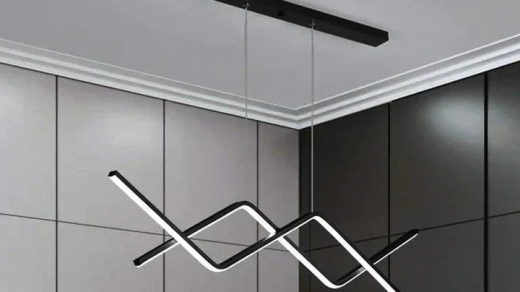Lighting plays a crucial role in creating a conducive learning environment for children. Adequate lighting not only enhances their concentration and productivity but also protects their eyesight. One of the most effective ways to ensure proper lighting in a child’s study area is by using a desk lamp. A desk lamp provides focused and adjustable lighting, making it easier for children to read, do homework, and engage in other learning activities. In this article, we will explore the importance of adequate lighting for children’s learning, the benefits of using a desk lamp, how to choose the right desk lamp for your child’s needs, safety considerations, creative and fun desk lamp designs, incorporating a desk lamp into your child’s homework routine, desk lamp accessories, desk lamps for kids with special learning needs, and the future of children’s desk lamps.
The Importance of Adequate Lighting for Children’s Learning
Proper lighting is essential for children’s concentration and productivity. Bright and well-distributed light helps children stay focused on their tasks and reduces eye strain. Insufficient lighting can lead to decreased attention span and difficulty in understanding and retaining information. Studies have shown that students who study in well-lit environments perform better academically compared to those in poorly lit spaces.
In addition to concentration and productivity, poor lighting can also have negative effects on children’s eyesight. Insufficient light can cause eye strain, fatigue, and headaches. It can also lead to myopia or nearsightedness. On the other hand, excessive brightness or glare can cause discomfort and make it difficult for children to see clearly. Therefore, it is crucial to provide adequate lighting that is neither too dim nor too bright.
The Benefits of a Desk Lamp for Kids’ Study Habits
A desk lamp is an excellent tool for improving children’s study habits. It provides focused lighting directly on the task at hand, whether it is reading a book, doing homework, or working on a project. The adjustable arm and shade of a desk lamp allow children to position the light exactly where they need it, reducing eye strain and improving visibility.
Using a desk lamp for homework and reading has several benefits. Firstly, it creates a dedicated study area that is well-lit and free from distractions. This helps children develop a routine and associate the desk lamp with focused work. Secondly, the focused lighting provided by a desk lamp helps children concentrate on their tasks and improves their reading comprehension. Lastly, using a desk lamp can create a sense of ownership and responsibility in children, as they have their own designated study space.
How to Choose the Right Desk Lamp for Your Child’s Needs
When choosing a desk lamp for your child, it is important to consider their age and needs. Younger children may require a lamp with a softer light, while older children may need a brighter light for more detailed tasks. Here are some tips for selecting the right desk lamp:
1. Consider the brightness: Look for a lamp with adjustable brightness levels so that your child can customize the lighting according to their needs.
2. Choose the right color temperature: Color temperature refers to the warmth or coolness of the light emitted by the lamp. Cooler temperatures (around 5000K) are ideal for tasks that require focus and concentration, while warmer temperatures (around 3000K) create a cozy and relaxing atmosphere.
3. Opt for an adjustable lamp: A lamp with an adjustable arm and shade allows your child to position the light exactly where they need it, reducing eye strain and improving visibility.
4. Look for energy-efficient options: Choose LED lamps that are energy-efficient and have a long lifespan. LED lamps also produce less heat, making them safer for children to use.
Top Features to Look for in a Children’s Desk Lamp
When choosing a desk lamp corpohome for your child, there are several key features to consider. These features can enhance the functionality and usability of the lamp, ensuring that it meets your child’s needs. Here are some top features to look for in a children’s desk lamp:
1. Adjustability: Look for a lamp with an adjustable arm and shade so that your child can position the light exactly where they need it. This allows for better visibility and reduces eye strain.
2. Brightness control: Choose a lamp with adjustable brightness levels so that your child can customize the lighting according to their needs. This is especially important for tasks that require focused attention.
3. Color temperature control: Consider a lamp that offers different color temperature options. Cooler temperatures (around 5000K) are ideal for tasks that require focus and concentration, while warmer temperatures (around 3000K) create a cozy and relaxing atmosphere.
4. Eye protection features: Some desk lamps come with built-in eye protection features such as flicker-free lighting and low blue light emission. These features help reduce eye strain and fatigue, especially during long study sessions.
5. Energy efficiency: Choose LED lamps that are energy-efficient and have a long lifespan. LED lamps also produce less heat, making them safer for children to use.
Safety Considerations for Kids’ Desk Lamps

When using a desk lamp, it is important to ensure that it is safe for your child to use. Here are some safety considerations to keep in mind:
1. Stability: Choose a desk lamp with a stable base to prevent it from tipping over easily. This is especially important if your child tends to be active or has younger siblings who may accidentally knock over the lamp.
2. Heat dissipation: LED lamps produce less heat compared to traditional incandescent or halogen lamps. However, it is still important to choose a lamp that has good heat dissipation to prevent overheating.
3. Cord safety: Make sure the lamp’s cord is long enough to reach the nearest power outlet without creating a tripping hazard. It is also important to keep the cord away from your child’s reach to prevent accidents.
4. Material safety: Choose a lamp made from non-toxic materials that are safe for children. Avoid lamps with sharp edges or small parts that can be a choking hazard.
5. Electrical safety: Look for lamps that have been tested and certified for electrical safety. Check for safety labels such as UL (Underwriters Laboratories) or ETL (Intertek) certification.
Creative and Fun Desk Lamp Designs for Kids’ Rooms
Desk lamps don’t have to be boring! There are many creative and fun designs available that can enhance your child’s learning environment. Here are some examples:
1. Animal-shaped lamps: Lamps shaped like animals such as owls, dinosaurs, or cats can add a playful touch to your child’s desk. These lamps often have adjustable arms and shades, making them both functional and fun.
2. Novelty lamps: Novelty lamps come in various shapes and designs, such as rockets, cars, or robots. These lamps can spark your child’s imagination and make studying more enjoyable.
3. Color-changing lamps: Lamps that change colors can create a soothing and relaxing atmosphere in your child’s room. Some lamps even come with remote controls, allowing your child to customize the colors according to their mood.
4. DIY lamps: DIY lamp kits allow your child to build their own desk lamp using various components and materials. This not only enhances their creativity but also gives them a sense of accomplishment.
How to Incorporate a Desk Lamp into Your Child’s Homework Routine
Incorporating a desk lamp into your child’s homework routine can help create a comfortable and productive study space. Here are some tips:
1. Establish a routine: Set a specific time for homework each day and make it a consistent part of your child’s schedule. This helps them develop a habit and associate the desk lamp with focused work.
2. Create a dedicated study area: Designate a specific area in your child’s room for studying and place the desk lamp there. This helps create a separate space for learning and reduces distractions.
3. Set up the desk lamp properly: Position the desk lamp so that the light is focused on the task at hand. Adjust the arm and shade to ensure that the light is not too bright or too dim.
4. Minimize distractions: Remove any unnecessary items from the study area that may distract your child. Keep the area clean and organized to promote focus and concentration.
5. Encourage breaks: Remind your child to take short breaks every 20-30 minutes to rest their eyes and stretch their body. During these breaks, they can adjust the lighting or change their position to prevent fatigue.
Desk Lamp Accessories to Enhance Your Child’s Learning Environment
There are several desk lamp accessories available that can enhance your child’s learning experience. Here are some useful accessories to consider:
1. Desk organizers: Desk organizers help keep your child’s study area neat and organized. They provide storage for pens, pencils, erasers, and other stationery items, making them easily accessible during study sessions.
2. Book holders: Book holders are especially useful for children who like to read while studying. They hold the book open at an angle, allowing your child to read hands-free while taking notes or working on assignments.
3. Magnifying lenses: Magnifying lenses can be attached to the desk lamp to provide extra magnification for detailed tasks such as reading small print or working on intricate projects.
4. USB ports: Some desk lamps come with built-in USB ports, allowing your child to charge their electronic devices conveniently while studying.
5. Light filters: Light filters can be placed over the lampshade to soften the light and reduce glare. They are especially useful for children with sensitive eyes or those who are easily distracted by bright lights.
Desk Lamps for Kids with Special Learning Needs
Desk lamps can be particularly beneficial for children with special learning needs. Here are some examples of how desk lamps can support children with specific challenges:
1. ADHD: Children with ADHD often struggle with focus and attention. A desk lamp with adjustable brightness and color temperature can help create a calm and focused environment, reducing distractions and improving concentration.
2. Dyslexia: Children with dyslexia may find it challenging to read due to visual processing difficulties. A desk lamp with a magnifying lens can provide extra magnification, making it easier for them to read small print.
3. Autism spectrum disorder: Children on the autism spectrum may be sensitive to bright lights or certain colors. A desk lamp with adjustable brightness and color temperature can help create a comfortable and soothing environment for them to study.
4. Visual impairments: Children with visual impairments may require additional lighting to see clearly. A desk lamp with adjustable brightness and a magnifying lens can provide the necessary lighting and magnification for them to engage in learning activities.
The Future of Children’s Desk Lamps: Innovative Technologies and Designs
The future of children’s desk lamps is filled with innovative technologies and designs that aim to enhance the learning experience. Here are some trends to look out for:
1. Smart desk lamps: Smart desk lamps can be controlled through mobile apps or voice commands, allowing for easy customization of lighting settings. They may also come with additional features such as built-in speakers or wireless charging capabilities.
2. Interactive lamps: Interactive lamps incorporate sensors or touch-sensitive controls that respond to the child’s movements or gestures. These lamps can create an engaging and interactive learning experience.
3. Eco-friendly designs: As sustainability becomes increasingly important, desk lamps made from eco-friendly materials and energy-efficient LED bulbs will become more prevalent. These lamps will not only reduce energy consumption but also contribute to a healthier environment.
4. Ergonomic designs: Desk lamps with adjustable arms, shades, and bases will continue to evolve to provide optimal lighting and comfort for children. These ergonomic designs will help reduce eye strain and promote good posture during study sessions.
Adequate lighting is crucial for children’s learning and overall well-being. Using a desk lamp can significantly improve their study habits, concentration, and productivity. When choosing a desk lamp for your child, consider their age, needs, and safety requirements. Look for features such as adjustability, brightness control, color temperature control, and eye protection. Incorporate the desk lamp into your child’s homework routine by creating a dedicated study area and setting up the lamp properly. Consider adding accessories such as desk organizers, book holders, magnifying lenses, USB ports, and light filters to enhance their learning environment. Desk lamps can also be beneficial for children with special learning needs. The future of children’s desk lamps is bright, with innovative technologies and designs that aim to enhance the learning experience.




